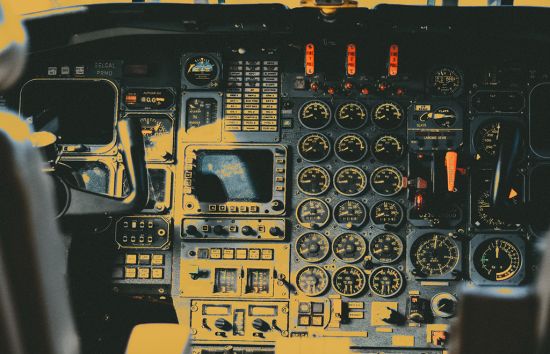
Is autonomous aviation a reality?
Sergio Collado
Is autonomous aviation a reality?
In this article, we will review some autonomous aviation projects currently in development. But first, what is autonomous aviation and how does it work?
What is autonomous aviation?
UAS, or Unmanned Aircraft Systems, are remotely piloted aircraft—i.e. a human operates the aircraft without being on board the vehicle. This article will focus on fully autonomous aircraft UAS: a new type of vehicle that can operate without a pilot, interact with traffic controllers, operate independently within the airspace and contact other pilots just as a human would. Autonomous operations require large data processing efforts and automated information processing, such as with videos or images.
These systems may improve aviation safety and efficiency and contribute to fuel and time savings due to route optimisations, reduction of operating costs, and support for pilots.
How does autonomous aviation work?
A combination of sensors and artificial intelligence technologies work together to enable autonomous aviation. Some of the technologies used in UAS are:
- Computer vision cameras: This technology uses methods to acquire, process, analyse and understand digital images. With these methods, high-dimensional data from the real world can be interpreted and generated in order to reconstruct a scene, detect and recognise objects, estimate a 3D position, etc. But cameras don’t always work well, like in fog or in a glare. For these cases, LiDAR is the solution.
- LiDAR: LiDAR, or ‘Light detection and ranging’, determines ranges by targeting an object with a laser and measuring the time it takes for the reflected light to return to the receiver. LiDAR can help generate high-resolution 3D representations of scenarios. With these technologies, the aircraft can ‘see’ in all conditions and estimate its own position in a high-resolution 3D scenario, though it may still require something to position itself globally and communicate with another aircraft.
- GPS, radar, accelerometers, gyroscopes, etc: A large set of sensors can detect the aircraft’s physical movements and geolocate them with numerical coordinates.
- V2X, radio, etc: V2X or vehicle-to-everything is a vehicular communication system used to communicate vehicles with infrastructure, networks, other vehicles, etc.
With this combination, the software systems can process real-time data that fuel artificial intelligence for autonomous aviation.
Autonomous aviation projects examples
Currently, the most advanced fully autonomous flying vehicles are AutoFlight and ATTOL, from Xwing and Airbus, respectively.
Autoflight
Autoflight is an autonomous flight system developed by Xwing, a San Francisco-based company founded in 2016. This system integrates sensors and maps with onboard flight control systems to allow regional aircraft to navigate safer than ever before.
In May 2020, the company acquired a Part 135 Air Carrier certificate from the Federal Aviation Administration. With this certificate, it can operate on-demand unscheduled charter services for air cargo transport. After this certification, Xwing made great advances in testing ground taxiing, takeoffs, landings, and flight operations supervised by a mission control center.
Based on this progress, the company announced on April 15th that it has completed the first fully autonomous demonstration flight in a Cessna Grand Caravan 208B aircraft. This flight included the departure and entry to a hangar during takeoff and landing, all monitored by a safety pilot.
Unlike other autonomous flight systems that require the development of new aircraft, Xwing’s system is installed on existing aircraft and will reduce the cost of developing new, autonomous aircraft.
Following the news of this flight, the company has received $55 million in capital from Led by Blackhorn Ventures, alongside ACME Capital, Loup Ventures, R7 Partners, Eniac Ventures, Alven Capital, and Array Ventures—capital that it plans to use for its expansion in twelve months.
ATTOL
Airbus leads project ATTOL, launched in June 2018. Following the acronym, this project aims to enable Autonomous Taxi, Take-Off, and Landing using computer-vision technologies and techniques.
With these technologies, Airbus announced on January 16th of 2020 that it successfully performed the first automatic take-off using vision-based technology on an Airbus test aircraft at Toulouse-Blanca airport. This test consisted of a total of eight take-offs in four and a half hours with a crew of two pilots, two flight test engineers, and a test flight engineer.
In June 2020, Airbus concluded this project after more than 500 flights. Over 450 flights were used to gather raw video data and tune algorithms. Later, a series of six test flights, each with five take-offs and landings, was used to test those same autonomous systems.
The mission of Airbus is not autonomous navigation itself, but rather the exploration of autonomous technologies to analyse their potential in addressing key industrial challenges of the future, such as air traffic management improvements, operations enhancements, and pilot shortages. For Airbus, pilots will remain at the heart of operations. Autonomous technologies allow them to focus less on aircraft operation and more on mission management and strategies, provided the necessary certification and regulation processes are developed by the relevant authorities. A review of the regulatory roadmap will be published soon in this blog.
Noting the great progress in these projects, autonomous aviation may be much closer than we think—and may soon be a reality in our daily lives.
https://techxplore.com/news/2020-12-future-autonomous-aircraft.html


